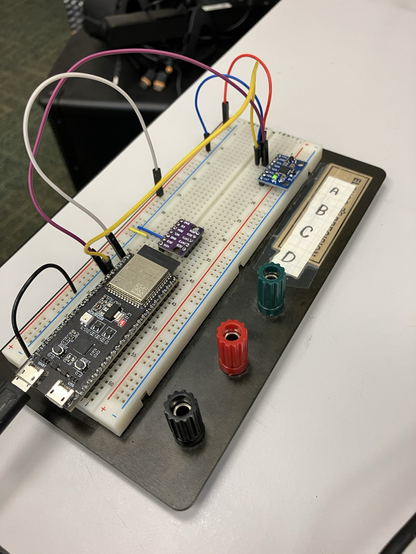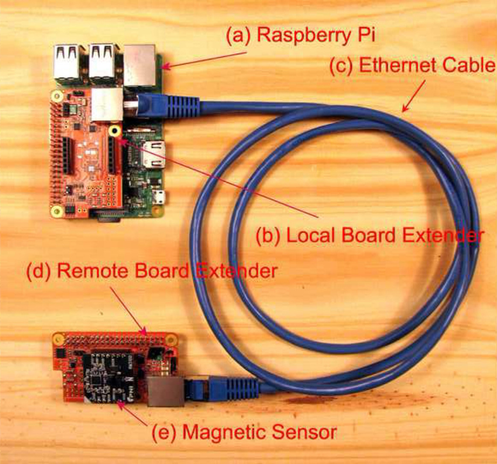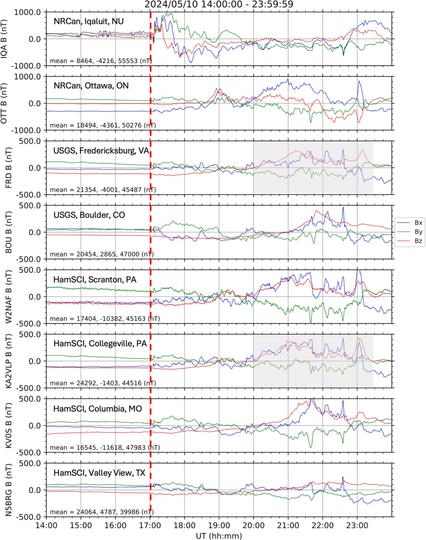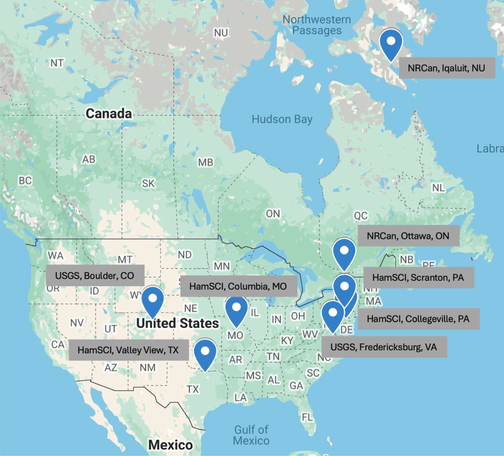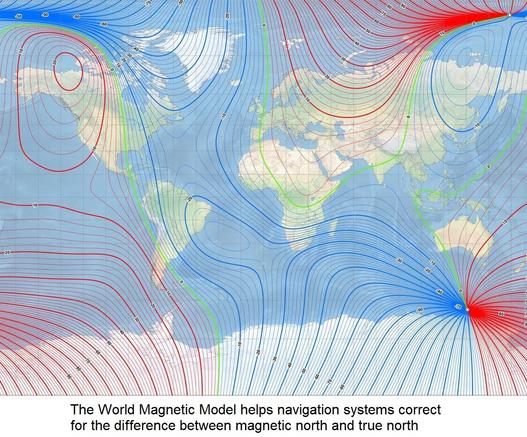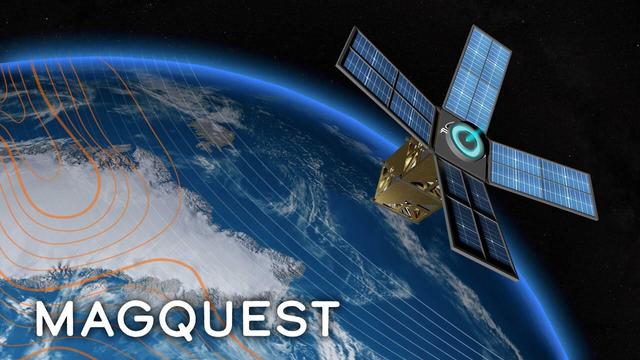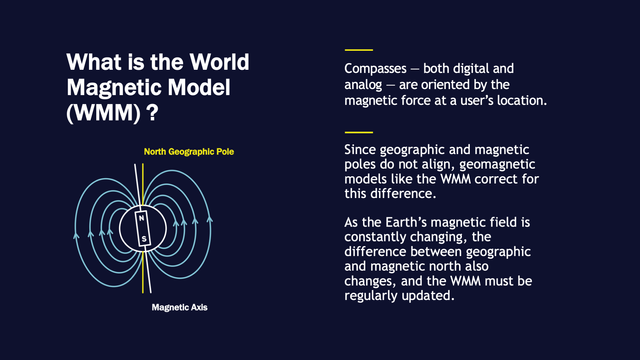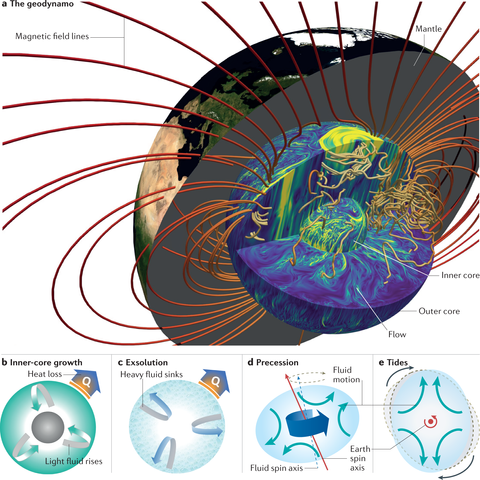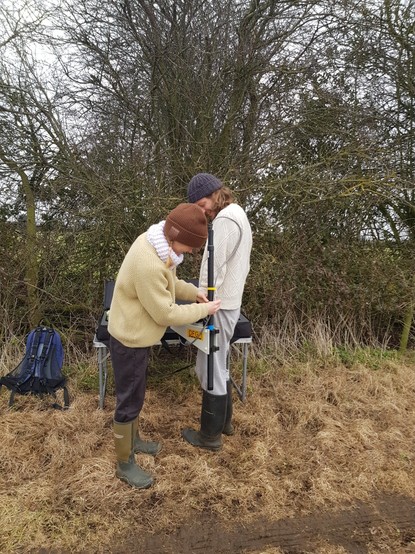#robotics #robot #ros #ros2 #nav2 #opencv #hardware #embedded #sensor #electronics #gps #depthcamera #gyroscope #magnetometer
#Magnetometer
SciTech Chronicles. . . . . . . . .April 29th, 2025
#"geothermally active" #"radioactive decay" #closure #"Wyoming Craton" #nanophotonic #nonlinear #Fidelity #Efficiency #camelina #pennycress #triacylglycerols #acetyl-TAG #Simpsonville #USCC #bushwhackers #magnetometer #"copper catalysts" #SAXS #degradation #CO2RR
#LSM6DS3 or #mpu6050 ? I found a lovely Kaplan implementation for #arduino that works really well with the #esp32 + 6050 with some small modifications. Anyone using a #magnetometer unit? If so, what’s your application?
#CitizenScience: Development of a low-cost #magnetometer system for a coordinated #space #weather monitoring:
-#RaspberryPi-based
-cost: ~$250
https://doi.org/10.1016/j.ohx.2024.e00580
#DIY #DIYtech #CitSci #instruments #lab #education #MINT #STEM #ionosphere #HamSCI #Raspi #HF
The Apple Watch As An Ammeter https://hackaday.com/2024/09/10/the-apple-watch-as-an-ammeter/ #WearableHacks #magnetometer #applewatch #ToolHacks #Ammeter
GOES-19 SEISS First Public Data 🛰️🧑🚀
#bestof #gmag #goddardmagnetometer #goes19 #goesr #goesu #magneticfield #magnetometer
⏩ 2 new pictures from NOAA (Flickr) https://commons.wikimedia.org/wiki/Special:ListFiles?limit=2&user=OptimusPrimeBot&ilshowall=1&offset=20240910132545
I'm building a lightweight, low power, waterproof, #multisensor, configurable #magnetometer for #geophysics and #geophysical site investigation. Logging with low power Linux SBC (Pi/Pocketbeagle). Interested in helping fund the project for discount prototypes? DM me. 10,000-250,000 nanoTesla sensitivity range less than 1kilo per meter of array. Maybe less. Easily flown with a drone, your choice of GPS.
#archeology #Geology
Quantum Sensor Uses Synthetic Diamond https://hackaday.com/2024/08/18/quantum-sensor-uses-synthetic-diamond/ #magnetometer #Science #diamond #quantum
Measuring Blood Values With Your Phone’s Compass: The secret is magnetism and a novel hydrogel test strip. #smartphone #magnetometer #hydrogel #glucose
https://www.instagram.com/p/C6W1G5qLp8W/
Schon seit Stunden steht unser #Magnetometer nicht mehr still, aber die Wolkendecke über Heidelberg bleibt geschlossen und es regnet immer mal wieder. Webcambilder bestätigen hingegen: rotes #Polarlicht bis in die Alpen. Also nix wie raus mit euch, wir wollen eure Bilder sehen!
U.S. Agency Seeks Better Maps Of Earth’s Magnetic Field [MagQuest]
--
https://spectrum.ieee.org/magnetic-world-model <-- shared article
--
https://www.ncei.noaa.gov/products/world-magnetic-model <-- World Magnetic Model (WMM) Technical Overview
--
https://www.magquest.com/ <-- MagQuest home page
--
#GIS #spatial #mapping #satellite #remotesensing #NGA #NCEI #NOAA #measurement #monitoring #earthobservation #EO #worldmagneticmodel #WMM #navigation #compass #global #earth #magneticfield #GPS #SWARM #ESA #MagQuest #magnetometer
@NGA @NCEI @NOAA @ESA
Building a Digital Compass With An Arduino https://hackaday.com/2023/07/12/building-a-digital-compass-with-an-arduino/ #magnetometer #MiscHacks #arduino #compass
"Juice’s first taste of science from space"
"ESA’s Jupiter Icy Moons Explorer, Juice, has recorded magnetic field data as its 10.6 m-long magnetometer boom deployed. .. The Juice magnetometer boom (J-MAG) was deployed on 21 April, when Juice was about 1.7 million km from Earth."
https://www.esa.int/ESA_Multimedia/Images/2023/04/Juice_s_first_taste_of_science_from_space
#ESA #JUICE #JMAG #Jupiter #Magnetfeld #Magnetometer #Spaceflight #Raumfahrt #Raumsonde #Sonnenwind
26.4.2023
"Jupitermond-Mission: Auf Ozeansuche mit Technologie aus Braunschweig"
"Live-Event zum Start der JUICE-Mission im Haus der Wissenschaft. Eine Presseinformation der Technischen Universität Braunschweig."
https://www.raumfahrer.net/jupitermond-mission-auf-ozeansuche-mit-technologie-aus-braunschweig/
#Braunschweig #ESA #FluxgateMagnetometer #Ganymed #IGEP #ImperialCollegeLondon #JMAG #JMAGIB #JANUS #JUICE #Jupiter #Magnetometer #Raketenstart #TUBraunschweig #TUGraz #Wolken
5.4.2023
I went doing #geophysics today with the Leicestershire Fieldworkers geophysics team and as a 'magnetic' I was helping laying a grid for a #magnetometer survey. #Archaeology
One of the instruments on #NASA's mission to the asteroid #Psyche is a #magnetometer that will measure ambient magnetic fields from orbit. Today, the Psyche magnetometry team had a science meeting at #MIT. There are so many questions as to what we might see, but so few answers.
Hi, I'm a software and hardware engineer with an enthusiasm for #foss and #oshw; *all* of my computers run #linux. I am also a citizen scientist, I operate a #magnetometer for #aurora detection. On GitHub you can find various software libraries that I've written, and also the hardware files for some low-cost magnetometers I designed. I've recently submitted a few contributions to the #openocd debugger project.
Hall Effect Module Knows Where Your Motor Is
If you have a motor and you'd like to know where the shaft position is, you are likely to turn to an optical encoder scheme. However, as [lingib] points out, you can also use a magnet and a magnetometer. You can see how it works in the video below.
The MLX90393 is a 3-axis hall effect device and, with a magnet on the shaft, the X and Y outputs of the spinning magnet will form a quadrature output that you can easily read.
The magnet is strong enough that the Earth's magnetic field becomes negligible. Post-processing involves scaling the two inputs to the same amplitude and shifting them so they are centered on zero. Then the angle in radians is the atan2 function of the X and Y coordinates.
We are always entertained by how many ways there are to measure any particular physical quantity. If you want to know more about the hall effect, we have you covered. In addition to magnetic and optical, mechanical encoders are also common.
#parts #halleffect #magneticencoder #magnetometer #mlx90393 #shaftencoder
Practical Sensors: The Hall Effect
Measuring a magnetic field can be very easy with some pretty low tech, or it can be very high tech. It just depends on what kind of measurement you need and how much effort you want to expend. The very simplest magnetic sensors are reed switches. These are basically relays with no coil. Instead of a coil, an external magnet gets close enough to make or break the contacts in the reed. You see these a lot in, for example, door alarm sensors.
Then again, there's no real finesse to a reed. It changes state when it sees enough of a magnetic field and that's about all. You could use a compass with some sort of detection on the needle to get some more information about the field, but not much more. That was, however, how early magnetometers worked. Today, you have lots of options, including the nearly ubiquitous Hall effect sensor.
You might use a Hall effect to measure the magnetic button on a keyboard key coming down when you press it or the open and closed state of a valve. A lot of Hall effects see service as current monitors. Since a coil generates a magnetic field proportional to the current through it, a magnetic sensor can estimate the current in a coil of wire without any physical contact. Hall effects can also watch a magnet go by in a linear motion system or a rotating system to get an idea of position or speed. For example, check out this brushless motor controller that uses three sensors to understand the motor's position.
History
Edwin Hall identified the effect in 1879. The basic idea is simple: an electrical conductor carrying current will exhibit changes due to an external magnetic field nearby. These changes show up as voltage you measure across the conductor. Normally, the voltage across a conductor will be nearly zero, but with a magnetic field, you'll get a non-zero reading in proportion to the magnetic field strength in a particular plane, as we'll see shortly.
Hall effect sensors are just one type of modern magnetometer. There are many different kinds including those that use inductive pickup coils that may or may not rotate or a fluxgate, which is a special type of coil. Some use a scale or a spring to measure force against another magnet -- sometimes microscopically. You can even detect a magnetic field using optical properties like the Kerr effect or Faraday rotation.
Then you get into the really exotic sensors. You can also measure proton resonance in hydrogen-rich materials like kerosene or detect energy states in gasses like cesium. Superconducting coils are also on the menu.
Still, Hall effects, especially those using semiconductors, are cheap and plentiful. They are also small. It is hard to imagine your PC keyboard using a superconducting coil to pick up small magnets glued to the bottom of the keys.
How Does it Work?
We like the video from [rcmodelreviews] that talks about the theory behind the Hall Effect (see below). however, the explanation is pretty simple even with no video. Consider a conductive sheet shaped like a dollar bill. Connected across the left and right sides is a constant voltage source, causing a current to flow through the conductor. If you measure the voltage -- the Hall voltage -- across the top and bottom of the bill, you'd expect the voltage to be nearly zero if the conductor is any good. With no magnetic field present, you would be right. The voltage across the top and bottom will be practically zero volts.
However, when a magnetic field is present with flux lines at right angles to the bias current, a Lorentz force acts on the electrons -- or other charge carriers, such as holes -- and they will bend away from the force as you can see in this animation. This will cause electrons to group together on one side of the conductor and tend to be absent from the other side.
<https://hackaday.com/wp-content/uploads/2021/03/Hall_Sensor.webm>
Hall effect animation is by [FraunhoferIIS], CC-BY-SA-4.0.
This causes the two sides to have different charges, and where we have a charge differential, we must have a voltage. In the animation, you can see the battery providing the current flow and the meter measuring the Hall effect voltage as the horseshoe magnet applies different magnetic fields to the device.
A practical device will have additional circuitry. Usually, there's an amplifier for the Hall voltage. Sometimes there's a regulator for the bias voltage. A digital output sensor may have a comparator and an output transistor, too.
Reading the Datasheet
Every device is different, so it pays to read the datasheet for the one you want to use. Hall effects generally have limitations on frequency range and can be rather expensive. Melexis, for example, has a 250 kHz device, and that's much faster than many other similar products. That particular device requires 5 V and less than 15 mA to operate.
From the datasheet, you can see there are two versions. One can operate up to about 7.5 millitesla and the other works around 20 millitesla. There's even a version that can work to 60 millitesla. Of course, there are many other choices from other vendors with different parameters.
Some sensors output a voltage proportional to the sensed magnetic field or you can get a digital on/off type sensor. Obviously, if you expect to deploy a sensor, you'll need different support for whichever sensors you choose to use. In some cases, you don't even need an external device. The ESP32, for example, has its own Hall effect built in, as you can see in this video.
Building with Hall Effect Sensors
If you want to build your own Hall effect projects, there are plenty to choose from. A portable magnetometer is quite simple and lives in a Tic Tac box. If you are measuring current, you might want to use a device that contains not just the Hall effect sensor, but everything else you need, too.
Or, why not build something new? If you do, though, be sure to send us a note on the tip line, so we can spread the word about your latest creation.
#engineering #featured #edwinhall #halleffect #halleffectsensor #magnetometer #sensor
antennas A for PRA were also for measuring electrical fields of plasma waves P ( rejected proposal had a #magnetometer to allow study of magnetic components of P). A had 10 m long elements, set 90° apart. For A : monopoles for pra, balanced dipole for pws
